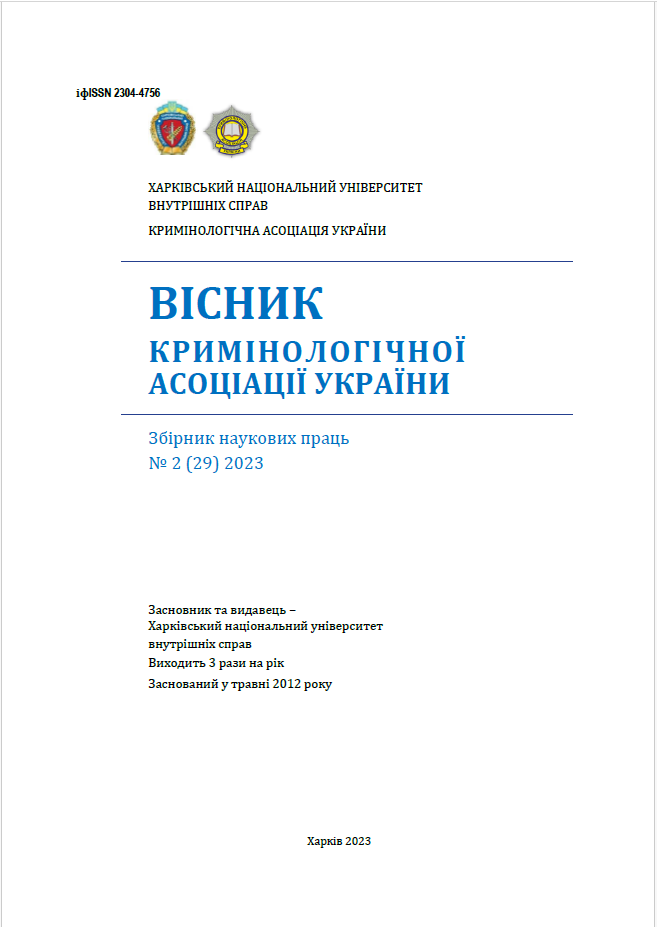ESSENCE AND STRUCTURE OF THE CRIMINAL CHARACTERISTICS OF CORRUPTION CRIMES COMBINED WITH OBTAINING ILLEGAL BENEFITS
Main Article Content
Abstract
The article emphasizes that the criminalistics description allows for the
identification of specifics in the mechanism of committing corruption crimes
associated with receiving illicit benefits, which is later considered during the
planning, organization, and execution of investigations into specific crimes of the
outlined category. It is highlighted that the content of the criminalistics
description must be regularly reviewed, as the mechanisms of corruption crimes
in general, and those involving illicit benefits in particular, continuously evolve
under the influence of changes in the criminogenic environment, legislative
reforms in the relevant sphere of social relations, informatization, and
digitalization of all spheres of human activity, including criminal activity. It is
proposed to define the criminalistics description of corruption crimes associated
with receiving illicit benefits as a theoretical category formed based on the
analysis of empirical data on the mechanism of committing the investigated
category of crimes, presented in the form of an informational model that allows
for the selection of optimal means and methods for investigating crimes.
Considering the established scientific approaches to structuring the criminalistics
description of corruption and related criminal offenses, as well as generalized
empirical data on the patterns of mechanisms of committing corruption crimes
associated with receiving illicit benefits, the following elements of the
criminalistics description of the investigated category of crimes have been
identified: the personality of the offender and the victim; typical methods; the
subject and the trace pattern.
Article Details

This work is licensed under a Creative Commons Attribution 4.0 International License.
